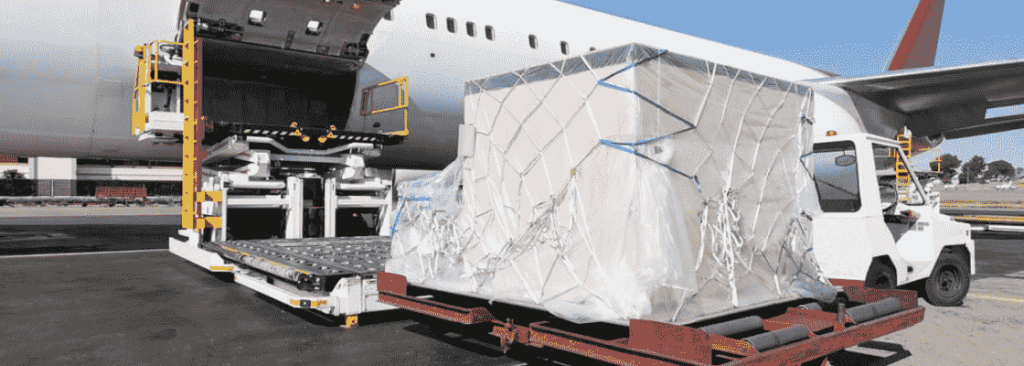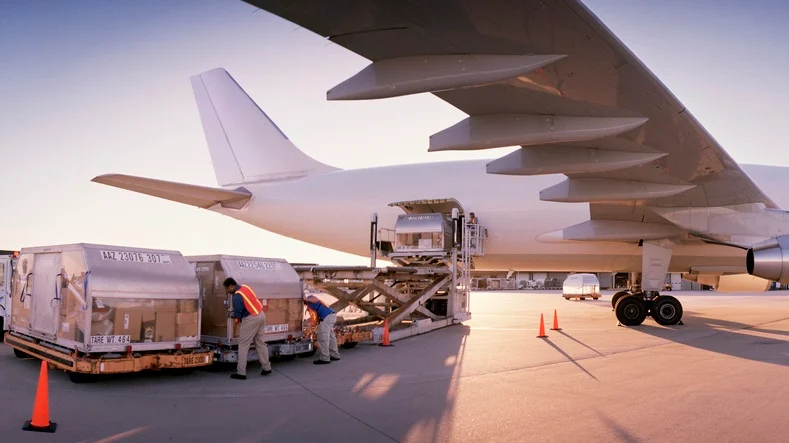International Air Shipping Overview | When Speed and Efficiency Matter Most
Are you looking for a fast and efficient way to transport your goods across the globe? Look no further than air shipping. As the global economy continues to grow, air freight has become the go-to option for businesses that value speed and reliability. Projections suggest substantial expansion in the air cargo sector throughout the Middle East & Africa between 2023 and 2028. Forecasts indicate an upward trajectory from $17.21 billion to $22.07 billion during this timeframe, reflecting a steady compound annual growth rate (CAGR) of 4.2%. This growth signifies the increasing reliance on air freight for efficient and rapid movement of goods in the region.
In this detailed guide, we’ll delve into the fundamentals of air freight shipping. From understanding the range of items that can be shipped to exploring the associated freight shipping cost and optimal scenarios for utilizing this mode of transport. Let’s embark on a journey into the realm of global shipping via air!
What is Air Freight Shipping?
Air freight shipping involves moving cargo using aircraft as the mode of transportation. This method offers various choices such as using the cargo hold of passenger planes, dedicated cargo planes, or even the available space in passenger aircraft for transporting goods. The process begins at the airline terminal, where the chosen air freight company receives the cargo. They prepare and load the cargo onto the aircraft. Airlines provide various services for air freight transportation, including general cargo, priority service, over-the-counter service, and hand carry service.

- General Cargo – This choice stands as the most cost-effective, loading merchandise into the lower section of the aircraft.
- Priority Service – Also known as “first flight out” service, this option ensures expedited delivery.
- Over-the-Counter Service – Additionally, in this air freight service, you deliver your goods to the airline terminal for shipment.
- Hand Carry Service – Moreover, this is the most expensive option, where someone takes your package and flies with it. Typically, businesses use it for shipping documents, high-value shipments, and expensive goods.
Regardless, commercial cargo is a separate service where the entire plane is a cargo hold. It is suitable for large palletized cargo, boxes, coffins, vehicles, machinery, and even animals.
What Can and Cannot Be Shipped by Air?
While nearly anything can be shipped by air, the decision is often based on speed and expense. Here are some of the most common goods shipped by air:
- Pharmaceuticals
- Perishable agricultural products
- Just-in-time goods & emergency cargo of parts
- Seafood
- Seasonal items with a short shelf life
- Documents
- Plants and flowers
- Electronic consumer goods
- Production samples
Some goods are too big or heavy to be shipped by air. However transporting goods via aircraft comes with regulations, especially concerning flammable, hazardous, and other dangerous items. Airlines maintain distinct policies outlining accepted and prohibited items. To ensure adherence to these regulations, it’s crucial to collaborate with your freight forwarder. They guide compliance with all pertinent rules and regulations governing air shipping.
What’s the Typical Duration for Air Shipping?
The duration of air freight transportation varies depending on the origin and destination of goods. Cross-country air freight can arrive at its destination in as little as six to seven hours for critical services. International air shipping may take a bit longer. However, it’s important to note that this is only the transportation time. Goods also need to be transported to and from the aircraft and the destination once the aircraft has landed. While air transportation is the fastest way to export goods, disruptions and shutdowns can cause delays, extending the delivery time to up to a week or longer.
What Factors Determine Air Shipping Rates?
Air freight is known for its speed, but it comes at a cost. Commonly, air shipping rates are calculated based on weight. Volumetric weight is often used, which takes into account the volume of the shipment in addition to its weight. Industry-standard formulas help derive these chargeable volumetric weights. Still pricing varies based on airlines and whether the flights are domestic or international. In addition to weight, flat fees for handling, documentation, customs clearance, and pick-up and delivery charges are also involved.

According to the World Bank, air shipping is limited by cost, with prices typically four to five times higher than road transport and 12 to 16 times higher than sea freight. Air freight rates generally range from $1.50 to $4.50 per kilogram, with the value of air cargo typically exceeding $4.00 per kilogram.
Differences Between Air Shipping and Sea Shipping
Air freight shipping and sea freight shipping are the two primary methods of shipping goods internationally. While air freight offers speed and efficiency, ocean freight is often chosen for its cost-effectiveness and ability to transport large volumes of goods. Here are some key differences between the two:
| Features | Air Shipping | Sea Shipping |
| Speed | Fast | Slow |
| Cost | Expensive | Affordable |
| Capacity | Limited | High |
| Reliability | High | Lower |
| Flexibility | High | Lower |
| Environmental Impact | Higher emission | Lower emission |
The choice between air freight and ocean freight depends on various factors such as the nature of the goods, budget, time constraints, and destination. While air shipping offers rapid transit, it is generally reserved for valuable, time-sensitive, or perishable goods.
Applications of Air Shipping
Air shipping is particularly suited for specific use cases where speed, reliability, and product characteristics play a crucial role. Here are some instances where air freight is the preferred choice:
- High-value goods | If you are shipping expensive or high-value goods, air freight provides additional security and reduces the risk of loss during transportation. The cost of shipping is a lower percentage of the landed cost for valuable goods.
- Small products | Additionally, air freight is more cost-effective for smaller goods. The higher cost per kilogram is offset by the smaller size and weight of the shipment.
- Time-sensitive deliveries | Furthermore, when you have a tight delivery window or a specific deadline, air freight ensures consistent on-time delivery. Estimated arrivals for air cargo may only deviate by a few days, and ocean containers can be stuck at the port for weeks.
- Goods sensitive to environmental conditions | Moreover, if your products are unable to withstand the elements of the ocean, such as dampness or extreme temperatures, air shipping provides a controlled environment that reduces the risk of damage.
Additional Considerations for Air Shipping
When shipping goods via air freight, it is essential to consider a few additional factors to ensure a smooth and successful process. First note that air freight is subject to various regulations imposed by organizations such as the TSA (Transportation Security Administration) and FAA (Federal Aviation Administration). Exporters must seek the counsel of a freight forwarder to understand and comply with all rules and regulations. This includes proper documentation and packaging of goods, especially for hazardous items. These measures are pivotal for ensuring global shipping success when utilizing air freight services.
Additionally, working with a reputable freight forwarding partner like Super Middle East freight & logistics can simplify the air freight shipping process. They can assist with documentation, packaging, customs clearance, and other logistics. However, freight forwarders have the expertise and knowledge to navigate the complexities of international shipping, ensuring that your goods arrive safely and on time.
Most importantly, given the higher cost of air shipping, it is crucial to manage expenses effectively. This can be achieved by optimizing packaging to reduce volumetric weight, consolidating shipments to maximize cargo space, and leveraging technology to streamline processes. Moreover, exploring freight insurance options can provide added protection for high-value shipments.
Conclusion
International shipping offers a fast and efficient way to transport goods across the globe. With its speed, reliability, and ability to handle valuable and time-sensitive products, air freight is a preferred choice for many businesses. By understanding the basics of air freight shipping, the items that can and cannot be shipped, and the factors to consider, exporters can make informed decisions to ensure successful shipping operations. So, whether you’re shipping pharmaceuticals, perishable goods, or high-value products, air shipping can provide the solution you need to meet your business requirements.
Contact us or explore our website to stay updated with the latest news and tips for exporters and importers!


